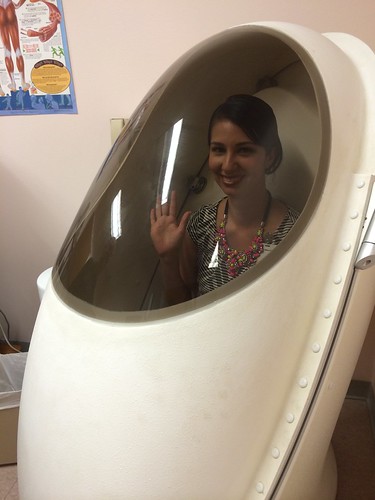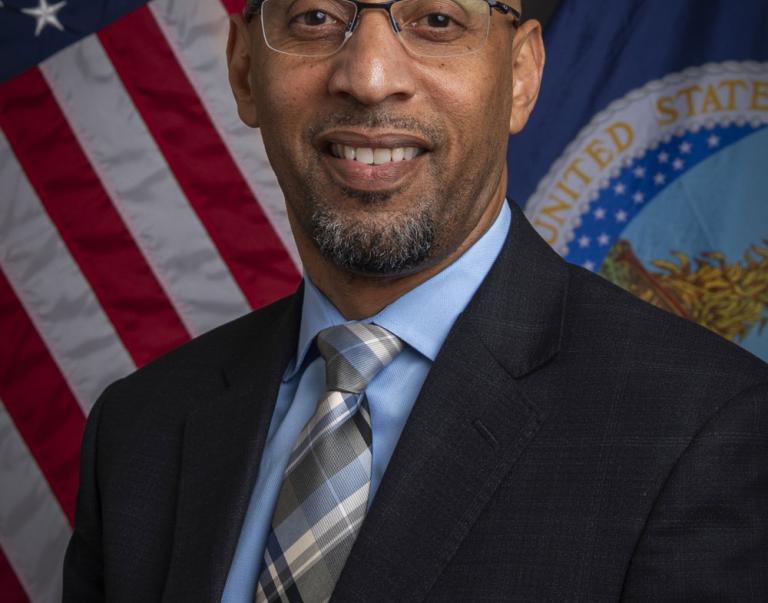
This post is part of the Science Tuesday feature series on the USDA blog. Check back each week as we showcase stories and news from USDA’s rich science and research portfolio.
To celebrate National Hispanic Heritage Month, USDA’s Research, Education, and Economics mission area will highlight those who are making significant contributions to American agriculture.
Swimming and visiting beaches are what most of us think of as summer activities. Although the name Bod Pod sounds like something you might find at the beach, and a swim suit and cap are the usual attire, Dr. Alicia Gonzalez-Quiroz, faculty member of Loredo Community College, never imagined this would be on her summer to-do list. The Bod Pod is actually a research tool used to measure lean body mass at the Agricultural Research Service (ARS) Body Composition Laboratory of the Children’s Nutrition Research Center in Houston, TX.
Dr. Gonzalez-Quiroz is part of an exclusive group of faculty members from Hispanic Serving Institutions, which partnered with ARS scientists from across the country to learn about agriculture research and develop tools to use with their students. The Bod Pod is one tool that works by measuring body volume through the displacement of air in the enclosed chamber. Body volume is combined with body weight (mass) to determine the individual’s body density. The technique then estimates the percentage of body fat and lean body mass through equations for the density of fat and fat free mass. This modern method to measure body mass replaces underwater weighing.
With the lab’s research focused on promoting healthy eating and physical activity in families and youth, Dr. Gonzalez-Quiroz’s participation resulted from her selection as a Fellow in the E. Kika de la Garza Science Program coordinated through the USDA Hispanic-Serving Institutions National Program. Since 1998, the E. Kika De La Garza Fellowship Program offers faculty from Hispanic-serving institutions the opportunity to work collaboratively with USDA to gain insight and understanding of the Federal Government, and to enhance professional growth while fostering workforce diversity. Selected through a competitive evaluation process, Science Fellows spend a week during the summer in Washington, DC learning about USDA agencies and meeting with key administration and staff before traveling to an ARS lab to team up with USDA researchers.
This year, scientific disciplines varied from studying invasive pest management; to enhancing the nutritional components of plant species; to the science associated with childhood obesity issues. Joining ARS labs from Hawaii, Florida, and Texas, Fellows became immersed in the USDA research experience. “I truly became engaged in the areas of which USDA operates,” Gonzalez-Quiroz noted at the completion of the program. “I am now able to give insight to my students on what research and internship opportunities await them.”
The competitive selection process for next year’s Research Fellows begins in the spring. If you are a member of faculty serving our Hispanic Serving Institutes and interested in this special opportunity, please contact Dan Wueste, Program Manager. He can be contacted at daniel.wueste@osec.usda.gov for more information.


